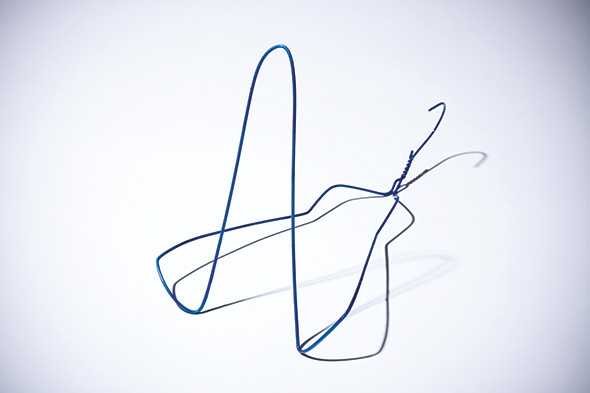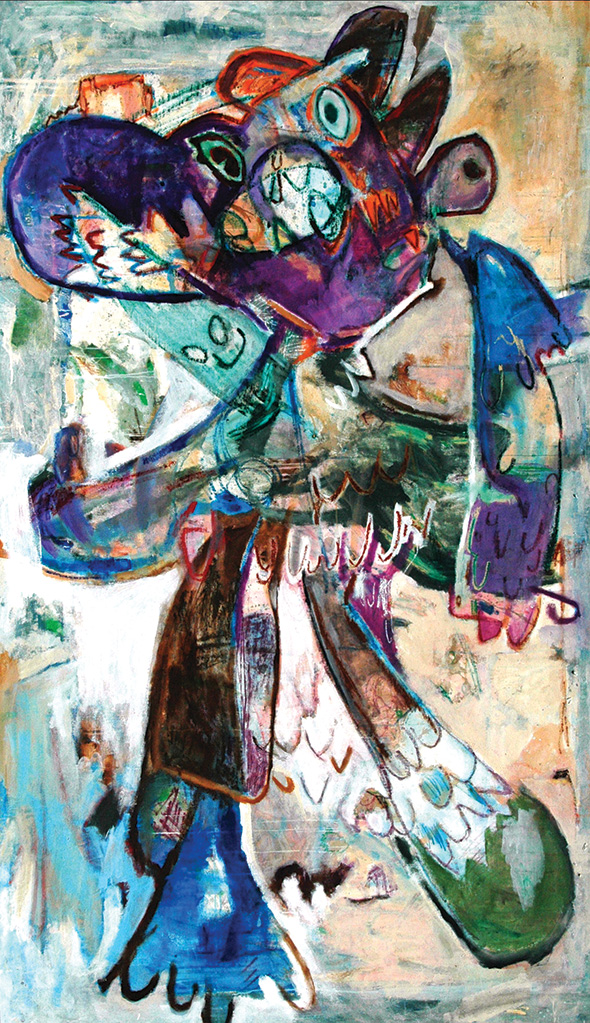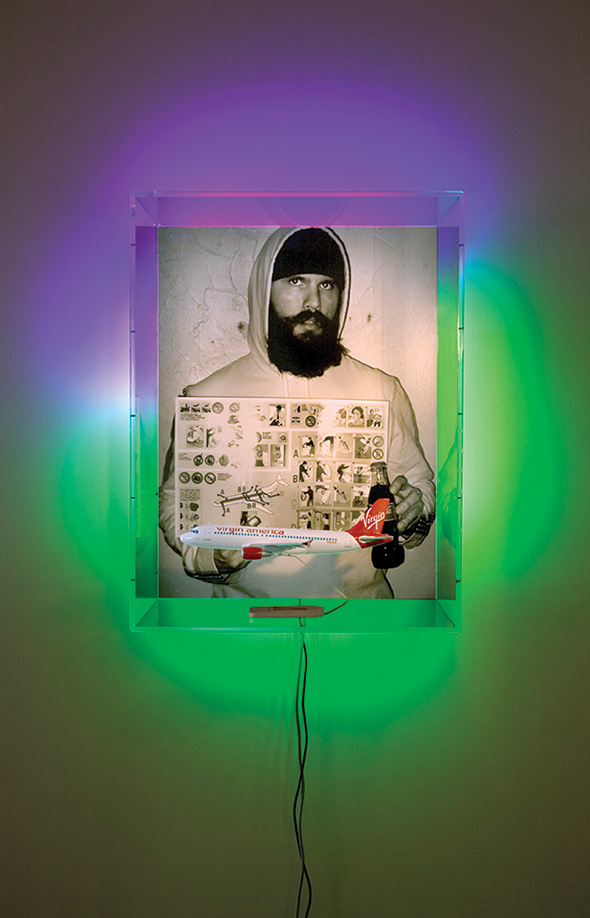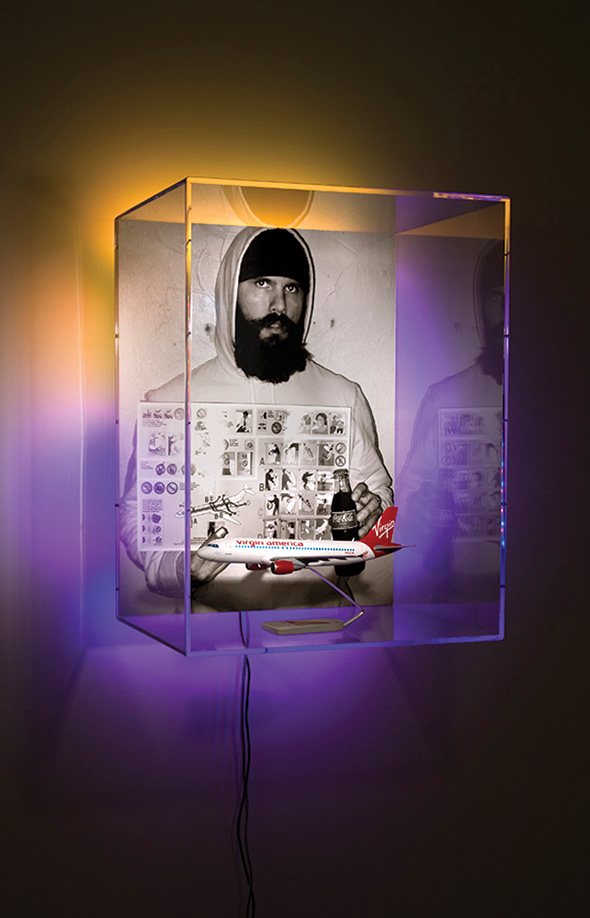

XVALA reshapes social commentary like he reshapes Mark Zuckerberg’s coat hanger: creatively, boldly and a little bit inappropriately
Guerilla tactics crossed the boundaries of warfare a long time ago, and their presence in the art scene is certainly no new phenomenon. What is new, however, is XVALA’s approach and use of contemporary art to comment upon the public’s obsession with and the potential threat of technology.
Recently drawn to SOMA Magazine’s attention for his dumpster-diving stint, XVALA is stealing the spotlight for his stance on the internet and what it has become today. XVALA’s transformation of Facebook CEO and Founder Mark Zuckerberg’s trash into intellectual and modern art is an unexpected twist in the world of social commentary. One of his most well known pieces on display at the Cory Allen Contemporary Art (CACA) gallery, entitled “Mark Zuckerberg’s Not Very Well Hung Hanger,” is a wire hanger that has been fashioned to reflect a phallic symbol.
CACA curator Cory Allen is often affiliated with controversial art for his partnership with creatives like Daniel Edwards in the past. But Allen begs to differ: “I don’t look for controversial artists. In fact, the idea of selling an idea based on ‘being controversial’ has no context. I work with artists who have no limitations and have a resilient approach to promote a message and provide commentary that the public can relate to. XVALA has the right attitude, and my interests with him specifically was that he follows through with his ideas, no matter how irrational they may sound.” Indeed, XVALA does pursue even the most seemingly irrational ideas; other than risking getting on Zuckerberg’s bad side, he has also been known to use nude and/or indecent images of Scarlett Johansson and Miley Cyrus to further his Fear Google campaign, using exposure to expose the dangers of the internet.


Simply another example of a paranoid anti-technology crusade? I asked XVALA (who all the while maintained his anonymous identity, of course) a few questions myself in order to clear things up a bit.
What prompted you to take Mark Zuckerberg’s trash and use it as a source of art? I have a confession. Stealing Mark Zuckerberg’s trash to create great artwork is more fun than you can imagine. My impression of Zuckerberg is that he likes to pull the jokes but doesn’t like the tables turned. I just wanted to mooch a bit, and I thought it’d be funny to use Zuck in the same way he uses all of us. Trash is always an important part of information collection — it’s revealing. I thought he’d get the joke and appreciate it.
Haha, Zuck. Aside from the hanger, what have been your favorite pieces that you’ve worked on and why? I just used mobile Google searches to create a trash sculpture from tech billionaires’ trashcans. I could stop there and have it end in a good spot, but I’m reusing the sculpture idea in a painting. I really like that kind of art. It’s in a series called Revenge Regret Remorse, but this piece uses Zuck’s hanger. It’s an abstract idea because it’s a painting of a promise from Mark Zuckerberg to his Facebook users.
Some view your work as merely paranoid about the internet — how would you respond to a claim like that? When I was dumpster-diving in Silicon Valley, it wasn’t to scare people; it was to show people how much the real world has become a techno fairytale. I thought how this is a bit like Snow White and the Seven Dwarves. The internet is a big mobile magic mirror that we use to search for information. The idea of the apple is there, and then there’s the seven dwarves: Mark Zuckerberg, Steve Jobs, Larry Page, Jack Dorsey, etc., and they’re these fantastic personalities.
Also, many compare you to Banksy — what are your thoughts on that? And Banksy has been compared to Bleck Le Rat. I put some of my art in the street, but I’m not a street artist.
Which artists would you say inspire you? If none, then what inspires you? I love it when Jeff Koons takes from another artist, develops a new idea/a new insight and then gives it to one of his artworks like it was already implied. I think Damien Hirst is a living Liberace, and that’s cool. I like modern art for what it was. A post-PC world is a complete turn-on.
So where do you draw the line between what’s acceptable/appropriate in the art world and what’s not? As a contemporary artist, I don’t recognize limitations. I only recognize what is art.
What exactly do you hope to achieve as a result of your work thus far? A partial goal is to display what happens in the post-PC era. We give the internet our information the same way we give the world our trash. I’m either going to change the way people think about trash or change the way people think about the internet. I’d also like you to think about the little digital trash icon that you use to discard information electronically.
TEXT BY Shilpika Lahri
PHOTOGRAPHY BY Simon Hurst

